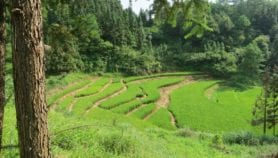Send to a friend
The details you provide on this page will not be used to send unsolicited email, and will not be sold to a 3rd party. See privacy policy.
Integrating the livelihoods of local people into environmental management can help prevent the desertification of the world’s drylands, scientists say.
Drylands ― characterised by scarce and unpredictable precipitation, little fertile soil, high temperatures and low humidity ― are home to 38 per cent of the global population and cover about 41 per cent of the Earth’s surface.
They are vulnerable to desertification caused by climate variations and human activity, such as tilling the land and grazing by domestic animals. Already 10–20 per cent of drylands have suffered severe degradation, directly affecting at least 250 million people.
A review published last week (10 May) in the journal Science proposes a comprehensive approach ― the Drylands Developments Paradigm (DDP) ― to understand and avoid further desertification.
It brings together researchers from several communities to promote a common vision: that dryland management must consider the complex interactions between humans and their environment.
“The DDP was born of the need to address how dryland communities can recover from the downward spiral of economic and ecological degradation,” Hadi Dowlatabadi, associate director of the Institute for Resources, Environment & Sustainability at the University of British Columbia, Canada, told SciDev.Net.
The framework could bring renewed hope to dryland communities, especially in developing countries, where meeting the needs of local communities places increasing pressure on resources, Dowlatabadi explained.
Key human and ecological variables, such as soil stability and demographic trends, can change simultaneously and slowly over time, meaning there is no quick fix in drylands management, according to the DDP.
“What managers need to do is be more patient and not try to understand a system based on short-term dynamics,” says James Reynolds, professor at US-based Duke University and lead author of the review.
Local environmental knowledge should also be combined with science-based data, the former having been greatly undervalued in the past.
The DDP has already been put to the test in Bolivia, Honduras and Mexico, where it was helpful in identifying key local issues, such as water management in a Mexican dryland community, although implementation of solutions has proven more difficult.
Despite these challenges, the DDP can help stabilise the carrying capacity of drylands in developing countries, Dowlatabadi told SciDev.Net.
“We are trying to take a more positive perspective,” added Reynolds. “Adhering to some common-sense principles can really make a difference in understanding and managing these lands.”Link to full article in Science
Reference: Science 316, 847 (2007)
Science DOI: 10.1126/science.1136163 (2007)
More on Desert science
News
US$1 million for East African ICT project
[NAIROBI] An organisation that gets multimedia into African villages has won a US$1 million award.12/09/11
News
Namibia’s satellite centre to warn of disaster threats
[WINDHOEK] A new satellite data centre in Namibia will help farmers prepare for27/07/11
Feature
Restoring Tanzania’s ecosystems
Degraded land in western Tanzania is gradually being reclaimed — two decades after ...26/03/08
News
Sub-Saharan Africa news in brief: 25 Feb–12 Mar 2008
Below is a round up of news from or about Sub-Saharan Africa for the period 25 February–12 Marc ...13/03/08
News
Namibia’s poor ‘will be hit hard’ by climate change
Climate change is expected to dramatically alter the lifestyles of poor people in Namibia, say the authors ...13/12/07
News
Soil degradation issues ‘swept aside’, say experts
Soil scientists have called for more targeted research and strict guidelines to stop what they say is the m ...07/09/07
News
UNEP: climate change behind Darfur conflict
[NAIROBI] Climate change that transformed the Darfur region from sustainable agricultural land into a parti ...29/06/07






